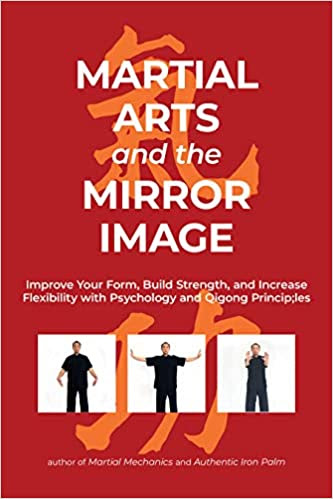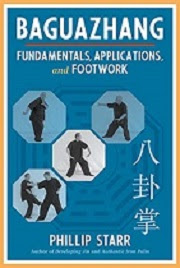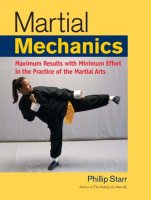By Phillip Starr
How many times
have I heard, “That traditional stuff doesn't work in a real street
fight!” And all the blather about “reality based” methods, as
opposed, I guess, to the methods different from theirs which, I
guess, are based on “unreality?” Oddly enough, I've never heard
one of these alleged combat authorities explain just WHY they don't
work, or if they ever did, just exactly WHEN did they become
obsolete...? As nearly as I can determine, many of the critics of
the “traditional stuff” believe there was a time in the hazy past
when the bad guys fought with perfect reverse punches and side kicks,
and the good guys defended themselves with textbook blocks and
counter-attacks. These “reality critics” must believe that the
“street fight situations” of the past looked much like a modern
karate class. When was this? If we follow the
logic of the aforementioned critics, we must suppose that around the
mid-1970's (when “full-contact fighting” came into vogue),
someone woke up and realized that “real fighting” involved things
like head butting, gouging, and multiple attacks. Wow...! How
brilliant of these innovators to have discovered this hidden truth
and to set out to rectify matters.
.jpg)
It is typical of
many people (especially nowadays) – mostly those of adolescent
mentality – to believe that nothing really important has happened
unless it has been in their lifetimes. Apparently, they believe that
until the advent of grappling (using the worn-out adage that “all
fights go to the ground”), contact-type combative SPORT fighting
arts consisted of dorks attired in pajamas throwing jerky punches and
kicks and, of course, “judo chops” at each other. And we'd have
to conclude that all these “traditionalists” were either involved
in a massive cult-like deception or that the bad guys of the past
were just really, really stupid and easily defeated by such methods.

The truth is that
people engaged in hand-to-hand fighting – whether on a battlefield
or a tavern – tend to go about it in the same way that they always
have. Physiologically, we haven't changed much in a rather long
time. It's true that culture plays a role in how we fight; I
remember when I was a youngster, anyone who kicked in a fight was a
“sissy” and striking to the groin was unthinkable (I even saw a
WWI hand-to-hand manual that instructed soldiers that such a vicious
tactic was to be used only when one's life was at stake!). Nowadays,
everyone from citizens to criminals and even police officers are apt
to kick an opponent. A schoolboy in old England could expect his foe
to accept defeat if his nose was bloodied. City gangs of the 1950's
often had elaborate rituals of approaching each other, stalking, and
even posturing. Nowadays, such rituals have vanished and business
often starts with a drive-by spray of gunfire. Although gang members
are often criminals, they aren't stupid (for the most part); they
adapted their behavior to meet a change in combat.
.jpg)
But these are
actually secondary considerations in most cases; when it comes down
to people engaged in personal combat hand-to-hand, we haven't
suddenly discovered anything new. This is why it's silly to speak of
“traditional” ways of fighting. Rather than comparing
“traditional” and “reality” disciplines, it's more
appropriate to think of distinctions in APPROACHES to learning to
fight. Certainly, there are superior and inferior ways of teaching
and learning this skill. The karate/taekwondo/gong-fu school where
forms are perceived as a rote exercise, performed robotically and
always against an imaginary assailant is NOT engaging in traditional
training. More accurately, it is engaged in inferior training,
probably led by someone who never learned correctly in the first
place and is now passing down his bad habits and training methods to
his pupils. The grappling school wherein students immediately go to
the mat and students are taught in a haphazard way that doesn't teach
fundamentals, always hoping to “find what works” in the heat of
the action, isn't really doing anything new or revolutionary. It's
just poor training, like tossing someone out of a boat to teach them
how to swim.

Oftentimes, what
passes for traditional training - even in Japan and China – is no
more than a stylized pantomime in too many schools/groups. Just
because my gong-fu, karate, or judo doesn't work is no indication
that these arts are unrealistic. If I'm doing some diluted form,
it's my APPROACH to them that's unrealistic. To believe otherwise is
to embrace the crooked logic that these ancient arts have been an
enormous fraud; to believe that judo has been little more than 150
year-old delusion. It worked in the past. If it doesn't work now,
it isn't because people have learned to fight differently. It's more
likely that you're simply not doing it right.

Nearly all the
problems we have with martial arts today can be traced back to poor
teaching. I'm not necessarily speaking of those teachers who
pretending to have skill that they don't really have, or who teach
because it fills a need in their egos (although there are plenty of
those), but there are also teachers who are honest, well-meaning, and
truly dedicated...but they're still poor teachers.
Let me posit
this...first, it is very, very difficult to teach the martial ways.
Second, there are few who are really qualified to do it. Many of us
feel that the martial ways aren't too difficult to learn so long as
you have the physical and mental stamina for it. There are many
thousand of martial arts schools and clubs around the country with
many more thousands of teachers who lead them. The truth, however,
is that the authentic martial ways are enormously, dauntingly
sophisticated. They are ferociously hard to learn and even harder to
teach. Most people just don't get that.

For instance,
learning how to perform a proper side thrust kick, hip throw, or
wrist twist and understanding their mechanics AS THEY APPLY TO YOU
doesn't necessarily mean that you can reproduce it in someone else
who's built entirely differently than you. Acquiring the
understanding of the technique on a level where you can deal with
these situations takes years of training, experience, and insight.
In the same sense, being able to execute the technique while
practicing in a comfy environment with a cooperative partner is one
thing, but learning to do it under more difficult conditions and in
conjunction with other techniques is another. Some people have
learned because they possess the natural talent to teach themselves.
They learn not BECAUSE of the teacher, but IN SPITE of the teacher.

Moreover, the
teacher needs to learn more than just how to perform his techniques;
he needs to understand the underlying principles of his art so
thoroughly that he can see how they are embodied in it's techniques
(each one). In this way, he can teach the foundations of the art as
a whole instead of in disparate, unconnected techniques. This is
really a widespread problem in the martial ways. It's why so many
teachers actually just instruct a mishmash of disparate techniques
and tactics, hoping to cobble them together in a sort of “best of”
collection of the different arts they've learned. They fail to
understand that viable fighting arts must be based on coherent
principles that organize body and mind in a way that's dependable and
capable of being integrated as a whole into the individual.

Imagine, in a
crisis, a shooter who's been taught by one instructor to use the
weapon's front sight to aim and taught by another how to shoot
instinctively. He's going to be confused when the cards are down.
The same is true of the martial arts student.
The person who
would be a teacher has to climb to a point where his view is
sufficiently broad in order to show others how to get where he is and
to go beyond. Even with such a teacher, it isn't easy. Without one?
No way...













.jpg)




.jpg)

.jpg)











.jpg)








.jpg)






















